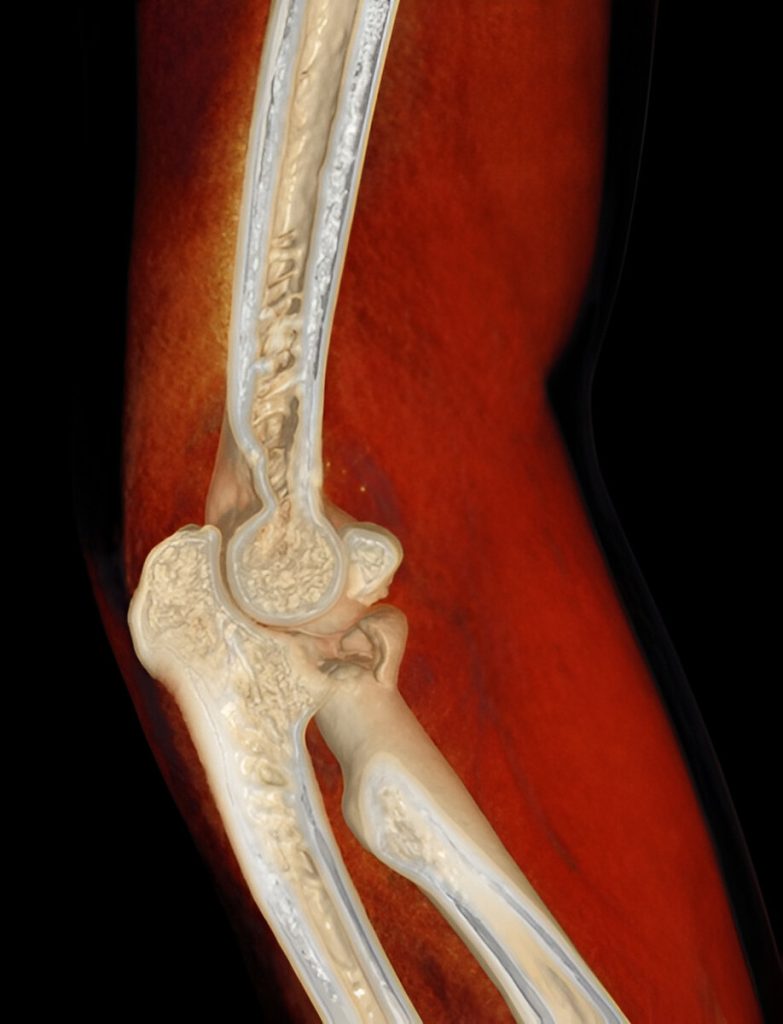What Are Loose Bodies in the Elbow?
Loose bodies are small fragments of bone or cartilage that have broken off and are floating freely within the elbow joint. These fragments can vary in size and shape, and may move around the joint space, occasionally becoming lodged between the bones during movement. This can lead to painful mechanical symptoms such as catching, clicking, or even temporary joint locking.
Loose bodies are often associated with joint degeneration, previous trauma, or conditions such as osteochondritis dissecans, arthritis, or osteochondral injuries.
Causes and Risk Factors
-
Osteoarthritis or post-traumatic arthritis
-
Repetitive overhead or weight-bearing activity (e.g., pitching, weightlifting)
-
Elbow fractures or dislocations
-
Elbow instability or ligamentous laxity
-
Prior elbow surgery
-
Osteochondritis dissecans (cartilage and bone damage in younger athletes)
Symptoms
-
Catching or locking during elbow movement
-
Audible clicking or popping
-
Pain during rotation or flexion/extension
-
A grinding sensation inside the joint
-
Decreased range of motion
-
Intermittent swelling or stiffness
Diagnosis
-
Detailed physical exam to assess joint mechanics
-
X-rays may identify calcified loose bodies
-
MRI or CT scan often required to visualize non-calcified cartilage fragments and assess joint damage
-
Evaluation for underlying structural issues such as arthritis or instability
Treatment
Non-Surgical Treatment
-
May be attempted in mild or intermittent cases:
-
Rest and activity modification
-
Nonsteroidal anti-inflammatory medications
-
Periodic corticosteroid injections
-
Physical therapy to maintain range of motion
-
-
However, loose bodies often persist and may worsen over time
Surgical Treatment
-
Often recommended to resolve persistent symptoms or prevent long-term joint damage
-
Arthroscopic removal is the most common and effective approach
-
Minimally invasive technique using small incisions
-
Allows removal of loose fragments and debridement of damaged cartilage
-
May also address underlying conditions (e.g., osteophytes or synovitis)
-
-
In more complex or arthritic elbows, open surgery may be necessary
Recovery Outlook
-
Recovery is typically rapid following arthroscopic removal
-
Most patients resume light activity within 2 to 4 weeks
-
Full return to sports or heavy lifting may take 6 to 8 weeks
-
Early intervention minimizes the risk of joint degeneration or permanent stiffness
Why Kerlan Jobe Institute?
At Kerlan Jobe Institute, our elbow specialists use advanced imaging and surgical techniques to precisely diagnose and remove loose bodies, helping restore full, pain-free function with minimal downtime.

